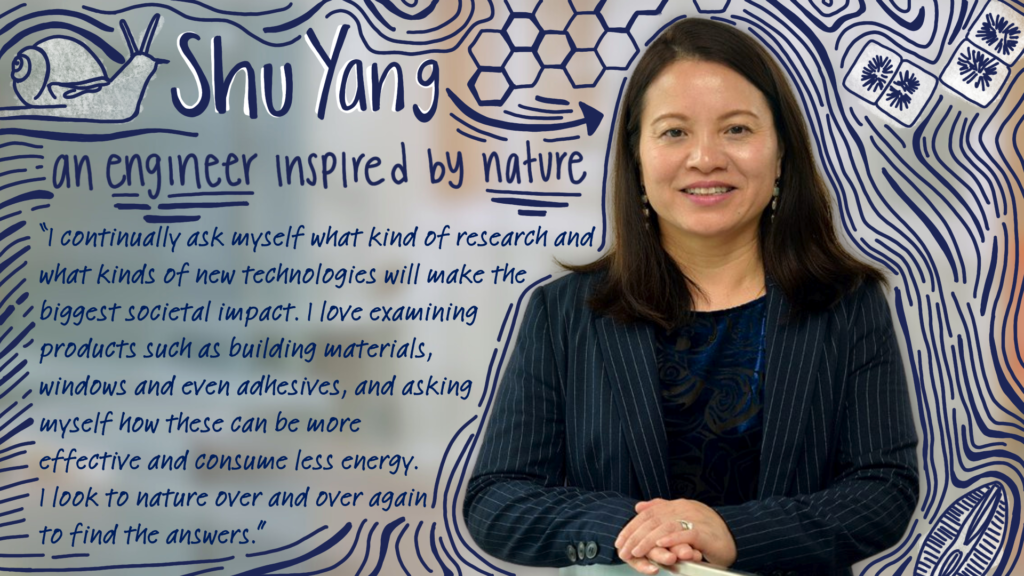
The Joseph Bordogna Professor and chair of Materials Science and Engineering has introduced simple yet effective technologies, including kirigami-inspired structures that aid in breast reconstruction, to the manipulation of knots to create stronger sutures.
Shu Yang, Joseph Bordogna Professor and chair of Materials Science and Engineering, looks at her research through the lens of biomimicry: Life forms and natural shapes have inspired her unique engineering solutions that span agriculture, building cooling and heating and reversible adhesives. For Yang, who also holds an appointment in Chemical and Biomolecular Engineering, each of her innovations start with changes on a fundamental level that can then grow into scalable and impactful products. Her creative approach, breadth of topics, and overwhelming number of applied inventions have named her this year’s Penn Center for Innovation Inventor of the Year.
“I continually ask myself what kind of research and what kinds of new technologies will make the biggest societal impact?” says Yang. “I love examining products such as construction materials, windows and even adhesives, and asking my group members how they can be more effective and consume less energy. I look to nature over and over again to find the answers.”
Yang uses kirigami, the Asian art of cutting and folding materials that is similar to origami, to mimic nature’s link between structure and function in her own inventions. Just as the hexagonal shape of the cells in beehives keeps the entire structure cool without the need for an external energy source, one of Yang’s inventions, designed with kirigami techniques, pulls water from the air passively.
“We created kirigami water collectors, sheets of plastic made up of unique, 3D pyramid structures,” says Yang. “The pyramid structures themselves trap air into vortices, like mini tornados. Moisture in the air in these tiny tornados is pulled onto the surface of the kirigami sheet with the help of a chemical coating that attracts water. The original device was made to provide fresh water from fog while dehumidifying large indoor and outdoor spaces, but it can be applied to a wide range of needs.”
As part of a $2.2million, multi-university U.S. Department of Energy project, Yang is redesigning these kirigami water collectors to be used in wood desiccation, a process required before wood can be burned to generate heat and power. The project will help the wood-drying industry to reach carbon-pollution-free electricity use by 2035.
This story is by Melissa Pappas. Read more at Penn Engineering Today.
